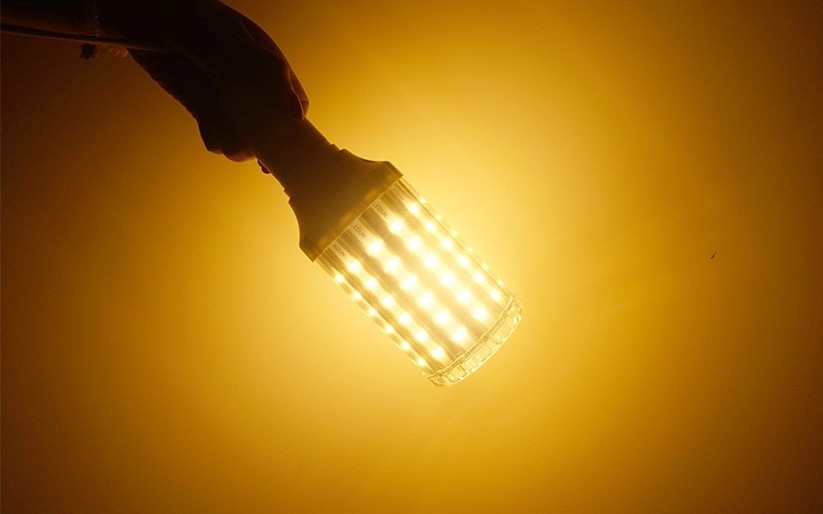
Lighting is an essential aspect of modern living, and it has come a long way since the days of oil lamps and candles. Today, we have access to a wide range of lighting solutions, including incandescent bulbs, fluorescent lights, LEDs, and corn lights. Corn lights are a relatively new addition to the lighting market, but they are quickly gaining popularity due to their energy efficiency and versatility.
What Are Corn Lights?
Corn lights are LED lights that have a unique shape, which resembles a corn cob. They are made up of series of small LED lights arranged in rows and columns on a cylindrical base. The base is usually made of aluminum or plastic, and it contains the driver and other electronic components necessary for the light to function.
Corn lights come in a range of sizes, from small bulbs that fit into standard light fixtures to larger bulbs that can be used for street lighting or other outdoor applications. They are available in a range of color temperatures, from warm white to cool white, and they can also be dimmable, making them suitable for a wide range of applications.
Advantages Of Corn Lights
- Energy Efficiency: Best Corn lights are highly energy-efficient, using up to 80% less energy than traditional incandescent bulbs. This means that they can help reduce energy consumption and lower electricity bills.
- Longevity: Corn lights have a longer lifespan than traditional bulbs, which means that they need to be replaced less frequently. This makes them a cost-effective solution for both homeowners and businesses.
- Versatility: Corn lights can be used for a wide range of applications, from indoor lighting to street lighting. They are suitable for both residential and commercial use, and they can be used in a range of fixtures, including lamps, floodlights, and streetlights.
- Environmentally Friendly: Corn lights are environmentally friendly, as they do not contain any hazardous materials, such as mercury, which is commonly found in traditional bulbs.
Applications Of Corn Lights
- Indoor Lighting: Corn lights are suitable for indoor lighting applications, including in homes, offices, and retail spaces. They can be used in a range of fixtures, including ceiling lights, lamps, and downlights.
- Outdoor Lighting: Corn lights are also suitable for outdoor lighting applications, including street lighting, parking lot lighting, and security lighting. They are durable and can withstand harsh weather conditions, making them a reliable solution for outdoor lighting.
- Industrial Lighting: Corn lights are suitable for industrial lighting applications, including in warehouses, factories, and production facilities. They provide bright, even lighting, which is essential for ensuring the safety of workers and improving productivity.
- Decorative Lighting: Corn lights can also be used for decorative lighting applications, including in restaurants, hotels, and other hospitality settings. They can be used to create a range of lighting effects, including dimming and color-changing, to create a unique and engaging atmosphere.
Choosing The Right Corn Light
When choosing a corn light, there are several factors to consider, including the color temperature, wattage, and size. The color temperature will determine the color of the light, with warm white being a softer, more yellow light and cool white being a brighter, whiter light. The wattage will determine the brightness of the light, with higher-wattage bulbs providing more light. The size will determine the fit of the bulb in the fixture, and it is important to choose the right size to ensure that the bulb is compatible with the fixture.
Installation Of Corn Lights
Corn lights are easy to install, and they can be used in a range of fixtures, including lamps, ceiling lights, and streetlights. When installing corn lights, it is important to follow the manufacturer’s instructions to ensure that they are installed correctly and safely. Here are some general steps for installing corn lights:
- Turn Off The Power: Before installing the corn light, it is important to turn off the power to the fixture or light socket to avoid electrocution.
- Remove The Old Bulb: If there is an existing bulb in the fixture, remove it carefully by unscrewing it from the socket.
- Install The Corn Light: Insert the corn light into the socket and screw it in securely. Make sure that bulb is seated correctly and that the pins or prongs are aligned with the socket.
- Turn On The Power: Once the bulb is installed, turn the power back on to the fixture and test the light to make sure that it is working correctly.
It is also important to note that corn lights should not be used in enclosed fixtures, as this can cause the bulb to overheat and shorten its lifespan.
Maintenance Of Corn Lights
Corn lights are low-maintenance and require very little upkeep. However, there are a few things that can be done to ensure that they continue to function properly:
- Clean The Bulbs: Dust and debris can accumulate on the surface of the bulb, which can reduce the amount of light that it emits. To clean the bulb, simply wipe it down with a clean, dry cloth.
- Check For Damage: Regularly inspect the corn light for any signs of damage, such as cracks or dents in the base. If there is any damage, the bulb should be replaced immediately.